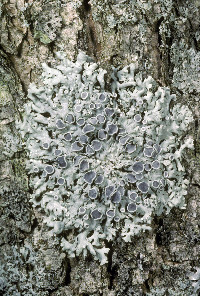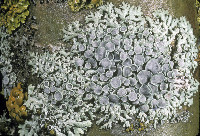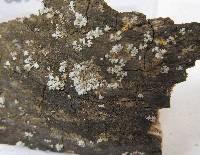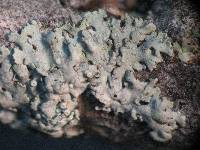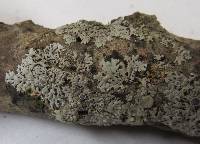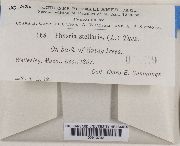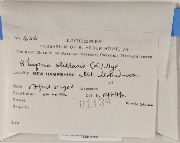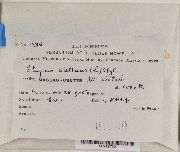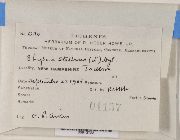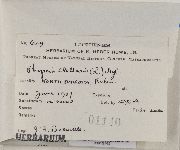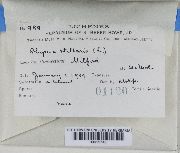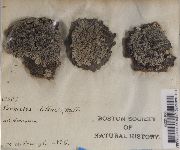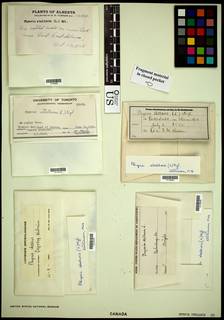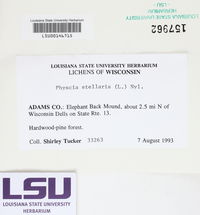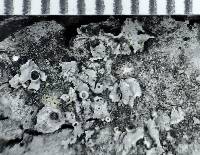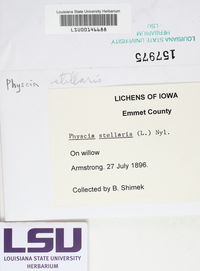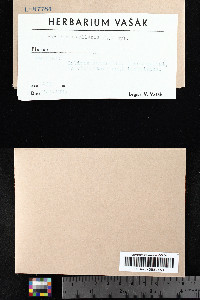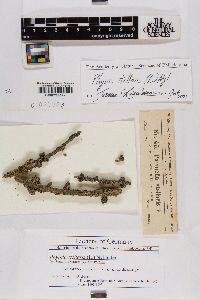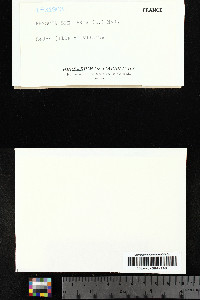
Consortium of Lichen Herbaria
- building a Global Consortium of Bryophytes and Lichens as keystones of cryptobiotic communities -
- Home
- Search
- Images
- Species Checklists
- US States: O-Z >
- US National Parks
- Central America
- South America
- US National Parks
- Southern Subpolar Region
|
|
|
|
Family: Physciaceae
Star Rosette Lichen
[Anaptychia stellaris (L.) A. Massal., moreBorrera stellaris (L.) Mudd, Dimelaena stellaris (L.) Norman, Geissodea stellaris (L.) J. St.-Hil., Hagenia stellaris (L.) De Not., Imbricaria stellaris (L.) DC., Lichen stellaris L., Lobaria stellaris (L.) Hoffm., Parmelia stellaris (L.) Ach., Parmelia stellaris var. pseudoincisa Th. Fr., Parmelia stellaris var. radiata Ach., Parmelia stellaris var. rosulata Ach., Parmelia stellaris var. stellaris (L.) Ach., Physcia retrogressa Stirt., Physcia stellaris f. rosulata (Ach.) Nyl., Squamaria stellaris (L.) Frege, Xanthoria stellaris (L.) Horw., Xanthoria stellaris var. leptalea (Ach.) Horw., Xanthoria stellaris var. stellaris (L.) Horw., Xanthoria stellaris var. subobscura (Nyl.) Horw.] |
Nash, T.H., Ryan, B.D., Gries, C., Bungartz, F., (eds.) 2002. Lichen Flora of the Greater Sonoran Desert Region. Vol 1. Thallus: orbicular or irregular, up to 4 cm diam., sometimes confluent with other thalli, loosely adnate lobes: radiating, truncate with open sinuses, up to 1 mm wide but mostly c. 0.5 mm, eciliate upper surface: whitish gray to cream-colored (margin often paler), mostly without pruina and maculation; soredia and isidia absent upper cortex: paraplectenchymatous medulla: white lower cortex: prosoplectenchymatous, cells sometimes short and thick-walled lower surface: white to brownish, with few pale rhizines Apothecia: usually abundant, variable in size, up to 1.5 mm diam., but usually less than 1 mm; margins: thick; disc: often pruinose ascospores: brown, 1-septate, Physcia- or Pachysporaria-type, (14-) 17.5-22.5 (-28) x (6.5-) 8-10 (-12) µm Pycnidia: ± abundant conidia: subcylindrical, 4-6 x 1 µm Spot tests: cortex K+ yellow, C-, KC-, P+ yellow; medulla K-, C-, KC-, P- Secondary metabolite: upper cortex with atranorin. Substrate and ecology: growing on trees in open situations World distribution: widely distributed species within the arctic, boreal and temperate vegetation zones Sonoran distribution: a relatively frequent species on trees from low to upper montane localities of Arizona, southern California, Baja California, Baja California Sur, and Sonora. Notes: The abundant apothecia, the K medulla and corticolous habitat are the main characters of P. stellaris. There is a slight difference in morphology and appearance within the range of its distribution (Moberg 1986: 860) and the Sonoran Desert material is closer to the southern type as would be expected. The closely related species P. convexella differs in lobe shape and substrate preference. |
|
|
|
Powered by Symbiota




